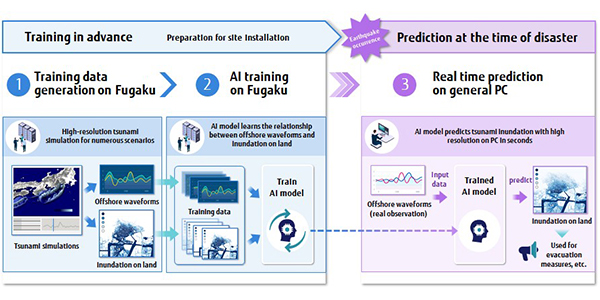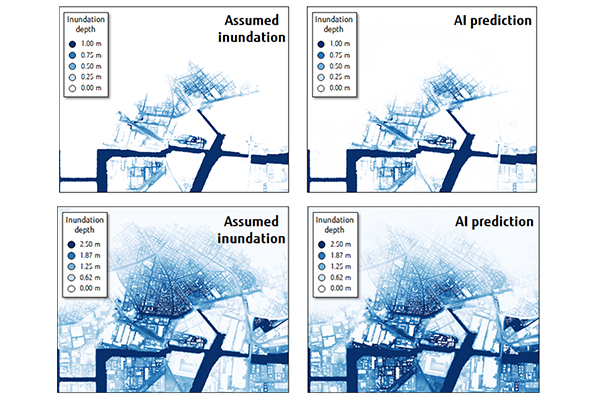Fujitsu leverages world's fastest supercomputer and AI to predict tsunami flooding

A new AI model that harnesses the power of the world's fastest supercomputer, Fugaku, can rapidly predict tsunami flooding in coastal areas before the tsunami reaches land.
The development of the new technology was announced as part of a joint project between the International Research Institute of Disaster Science (IREDeS) at Tohoku University, the Earthquake Research Institute at the University of Tokyo, and Fujitsu Laboratories.
The 2011 Great East Japan Earthquake and subsequent tsunami highlighted the shortcomings in disaster mitigation and the need to utilize information for efficient and safe evacuations.
While tsunami observation networks in Japanese coastal waters have been strengthened since then, using the data produced from those networks to predict a tsunami's path once it hits land has gained greater urgency. This is especially true since a major earthquake is likely to hit Japan's densely populated east coast sometime in the near future.
Tsunami prediction technologies will allow authorities to obtain accurate information quickly and aid them in effectively directing evacuation orders.
Fujitsu, Tohoku University, and The University of Tokyo leveraged the power of Fugaku to generate training data for 20,000 possible tsunami scenarios based on high-resolution simulations. These scenarios were used to streamline an AI model that uses offshore waveform data generated by the tsunami to predict flooding before landfall at high spatial resolution.

Conventional prediction technologies require the use of supercomputers and make rapid prediction systems difficult to implement. The current AI model, however, can be run in seconds on ordinary PCs.
When the model was applied to a simulation of tsunami flooding in Tokyo Bay following a large earthquake, it achieved highly accurate predictions with a regular PC within seconds. The results matched tsunami flooding of the tsunami source models released by the Cabinet Office of Japan.

The research team will continue to make use of Fugaku's high-speed performance in the future by training the system with additional tsunami scenarios. Doing so will help realize AI that can predict tsunami flooding over even wider areas.
